Remember that time an episode of British cartoon Peppa Pig was taken off air in Australia? It was the episode which taught kids that spiders aren’t scary. Not a lesson Aussie kids need to learn.
Well, fast forward a few years and Australian kids now have their own cartoon series reminiscent of Peppa Pig. Bluey is made at Ludo Studio in Brisbane. There are currently about 60 people working on the show.
I no longer have a little kid in the house, but we both checked out Bluey on ABC iView, because a Twitter friend recommended it thusly:
Bluey is getting a 9.5/10 rating on IMDb and was nominated for an Emmy. Bluey is marvellous.
First, why does Bluey remind me of Peppa Pig? The nuclear family set-up is similar. Instead of pigs the family are dogs. Bluey is an Australian blue heeler, making this a specifically Australian show, but not so Australian that the series won’t garner an international audience. (Bluey could be any dog, because she is first and foremost a kid… a human child in an animal’s body.)
Turns out the Peppa Pig comparison is no coincidence. I subsequently learned Joe Brumm set out to make an Australian Peppa Pig.
The art style is similar. Look at how both shows deal with aerial perspective (hint: It’s in the colour of the outlines.)
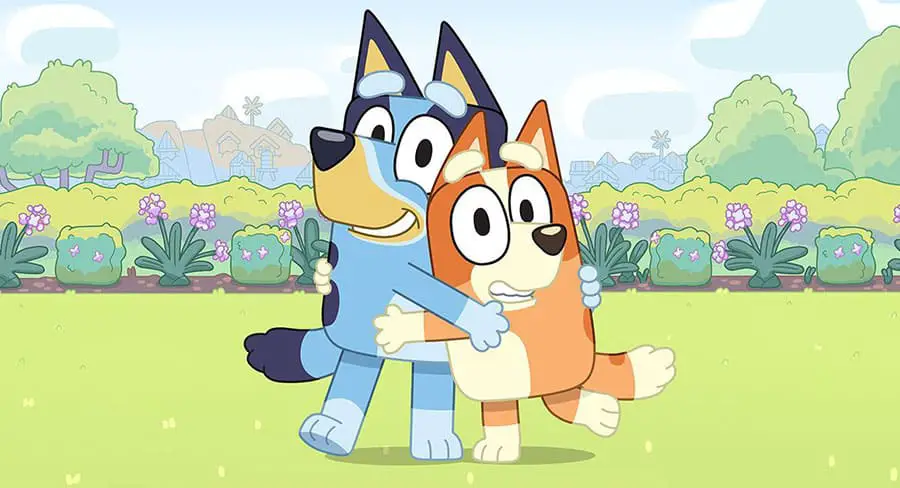

But the colour palette of Bluey is more appealing than that of Peppa Pig, and I wonder if Luke Pearson’s Hilda has been an influence.
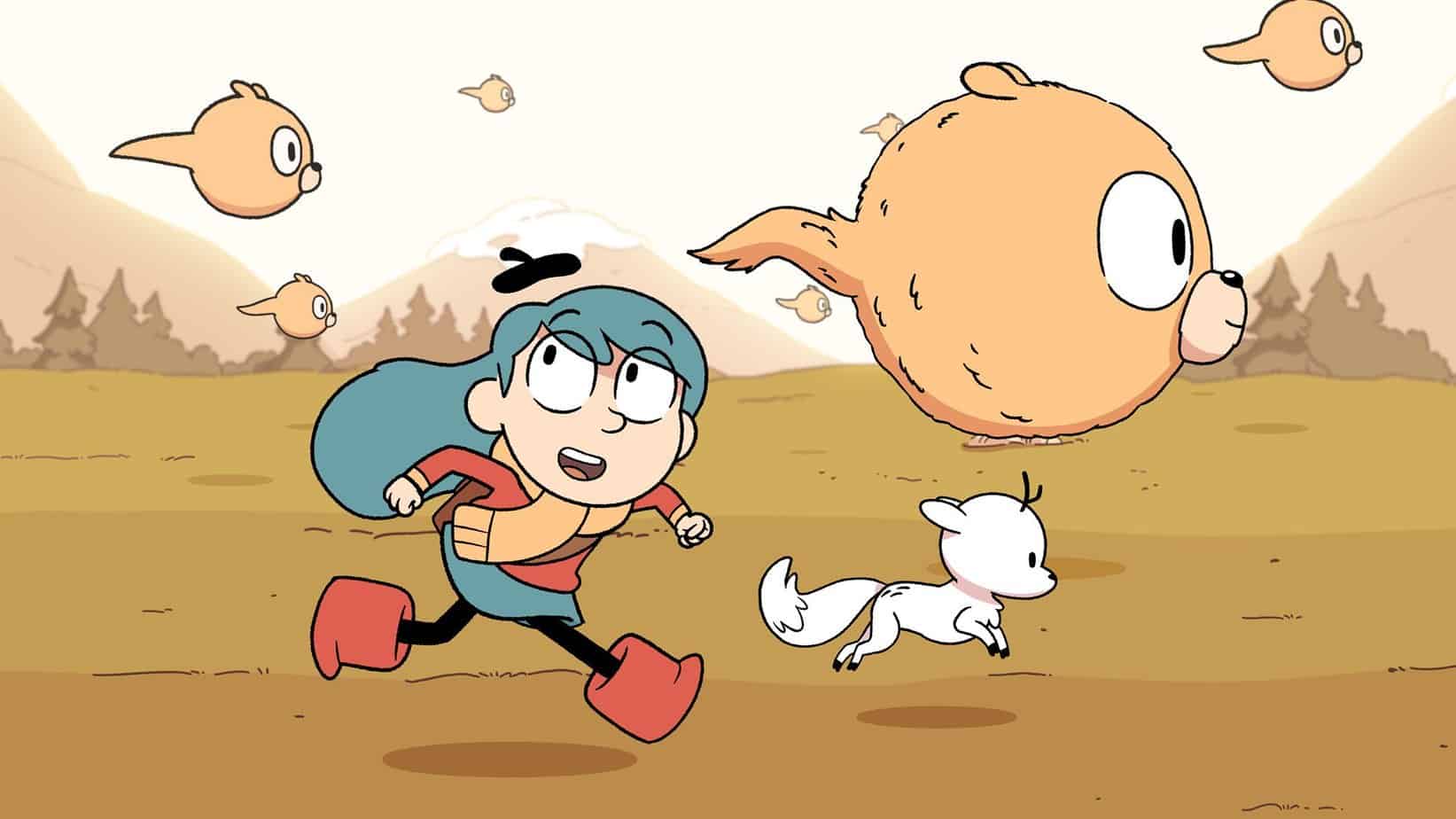
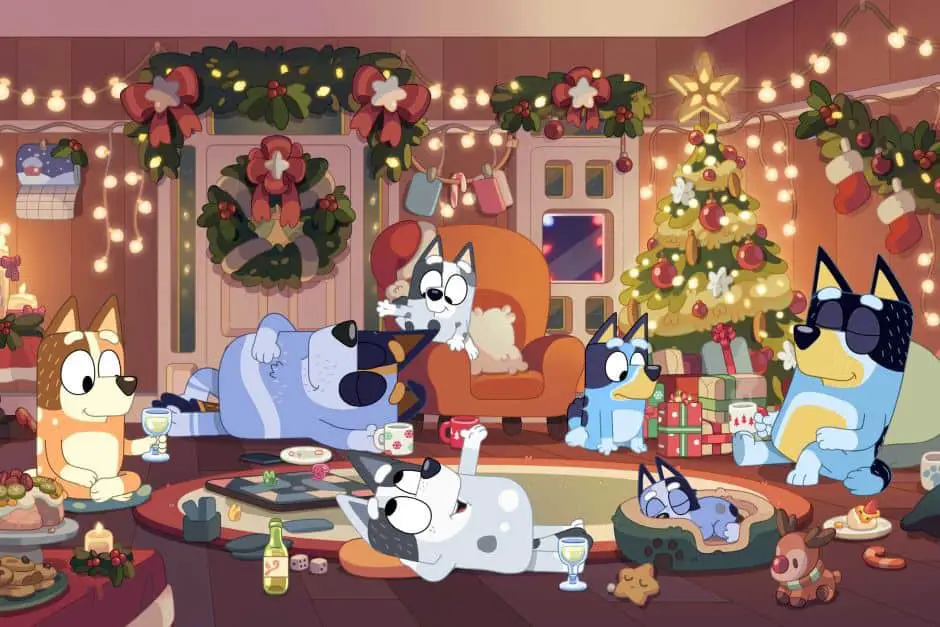

Child Development
Bingo and Bluey are 4 and 6 years old, the ‘social emotional developmental phase’, as described by Joe Blumm. He really likes this age because the kids are learning not so egocentric anymore. They want to play imaginative games but that involves other kids also having their input. The games temper their egocentricity. They need persistence to stay in those roles. The show is for that age. There’s no reading or anything like that, aimed at a more abstract age.
Blumm does not believe that kids are little adults. He wanted to create a show specifically for 4-6 year olds. His interest in psychology has clearly influenced his character development.
Family Life Realism
Another comparison is Olivia the Pig, but Bluey leaves Olivia in the dust. Bluey is clearly the brain child of people who know parenting and know kids. Ian Falconer (who wrote the original Olivia picture books) is not a parent himself and this shows in stories such as Olivia and the Missing Toy, in which I want to break the fourth wall and slap the pig parents. The actions of Olivia’s parents make no sense regarding Olivia’s character arc. In Bluey, the influence of good parenting has a direct effect on the child characters. This is realism.
Although the TV adaptation of Olivia no doubt included many parents on staff, to me it never ever reached the level of parenting realism achieved in Bluey, because the source material was lacking. Or maybe my perception of the Olivia series is partly coloured by the fact I’m not a rich New York parent. Perhaps the very Australian-ness of Bluey makes it feel like a more realistic portrayal of parenting to me (currently modern parenting in Australia).
But it’s more than that. Joe Brumm has two daughters, and the producer’s got two daughters and both his brothers have got two daughters. If you’re asking, “Why is Bluey a girl?” there’s your answer. But does the question really need to be asked? Why is it still so unusual to see a girl character without a massive pink bow telegraphing her gender smacked on top of her head?
What else makes Bluey feel ‘real’? (Code for ‘relatable’)
Integration of technology into family life
When Bluey wants to talk to her grandmother she simply calls up on the tablet. Granny doesn’t live in the same house, but she is only a call away. When Bluey and her father get back from the vet, distraught after finding a dying budgie, the mother is right there in the driveway waiting to offer comfort. It is clear that the father has called in advance to tell the mother what’s happened. This is how families are using technology.
In some ways story craft has become more difficult because of technology. How to put your fictional kids in real peril when parents are one phone call away? These kids are still too young to realistically carry mobiles, so there’s that. But my point here is that technology has also made story craft easier in some ways. The writers don’t need to show a retelling of the story to the mother, and no one would ask how she already knows.
MODERN PARENT-CHILD INTERACTIONS
Compare this show to any show from 15 years ago and you won’t find parents as realistically active and involved as these ones are. The parents in Bluey exist on the same hierarchy as the kids, but not in a way that subverts, in a carnivalesque way.
There is a long, long history of dispatching with parents in children’s stories but for modern kids, this won’t ring true. About half of the Bluey episodes include parents in the puppies’ imaginative play. I believe these are the best episodes, and my 11-year-old agreed. By including parents in the play, the writers are able to model more adult-like emotional literacy, and this show is very much about emotional literacy.

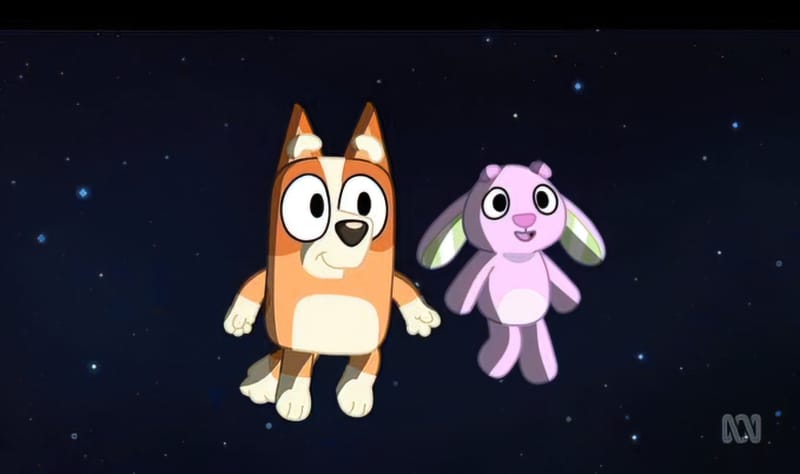
How do you apologise to someone (after leaving them out of a game)? How do you cope with being factually incorrect (about Grannies and flossing)? The parents are there to nudge the kids in the right direction.
Like any modern kids’ story, the lessons in Bluey are not taught overtly by the adults. The child characters receive prompting after being allowed to experience hard feelings on their own. At no point are they told that their bad feelings aren’t okay. It’s okay to be in a funk for the entire session at preschool. It’s okay to run out on a game if you need some time alone.
I was initially a little disappointed that it seemed the father constantly having fun with the kids (Mother as Female Maturity Formula, Dad as Doofus Fun Guy). But a few episodes in, the mother is shown participating in one of the kids’ games. Moreover:
- Both mother and father make the bed, together (even though the mother is gently admonishing the father for some housework matter that supposedly didn’t happen yesterday)
- The mother isn’t busy cooking dinner and waiting on the family while the dad has fun, like we often see in older stories. In the pilot episode of Bluey the mother is out at a baby shower (supposedly a fun social outing for her) while the rest of the family stay home and have fun of their own.
THE KIDS FEEL LIKE REAL KIDS
Bluey’s puppy characters are voiced by children, and these kids don’t sound like they came out of London’s most expensive elocution school. I don’t know how they did it, but it sounds naturalistic.
That said, it’s more than voice acting that achieves the sense that these puppies are ‘real kids’.
On Northrop Frye’s scale of mimetic heroes, the puppies are low-mimetic. They’re not tricksters. For example, one morning Bluey wakes up her father one morning and mimics everything he says and does. Eventually the father says, “My name is Bluey and I smell like a monkey’s butt!” Bluey isn’t savvy enough to NOT fall for that one, and the father good-naturedly ‘wins’. Fathers do tend to win these sorts of games, because fathers have been around longer.
Humour of Bluey
When looking at humour in kids’ shows I like to use taxonomy from the creator of The Onion.
LANGUAGE HUMOUR
There’s plenty of language humour in Bluey, with words specific to the show. These examples of familect (I’m guessing from the creator himself) are likely to become part of the wider cultural lexicon, much like ‘Yoink!’ and ‘Eat my shorts!’ from The Simpsons. https://twitter.com/ariannaoliver_/status/1190978865767862278?s=20
A lot of the jokes on this show are funny because they are relatable family moments. Family moments might be given its own terminology e.g. ‘a tactical wee’. Giving something ordinary a name is funny in its own right.
CHARACTER HUMOUR
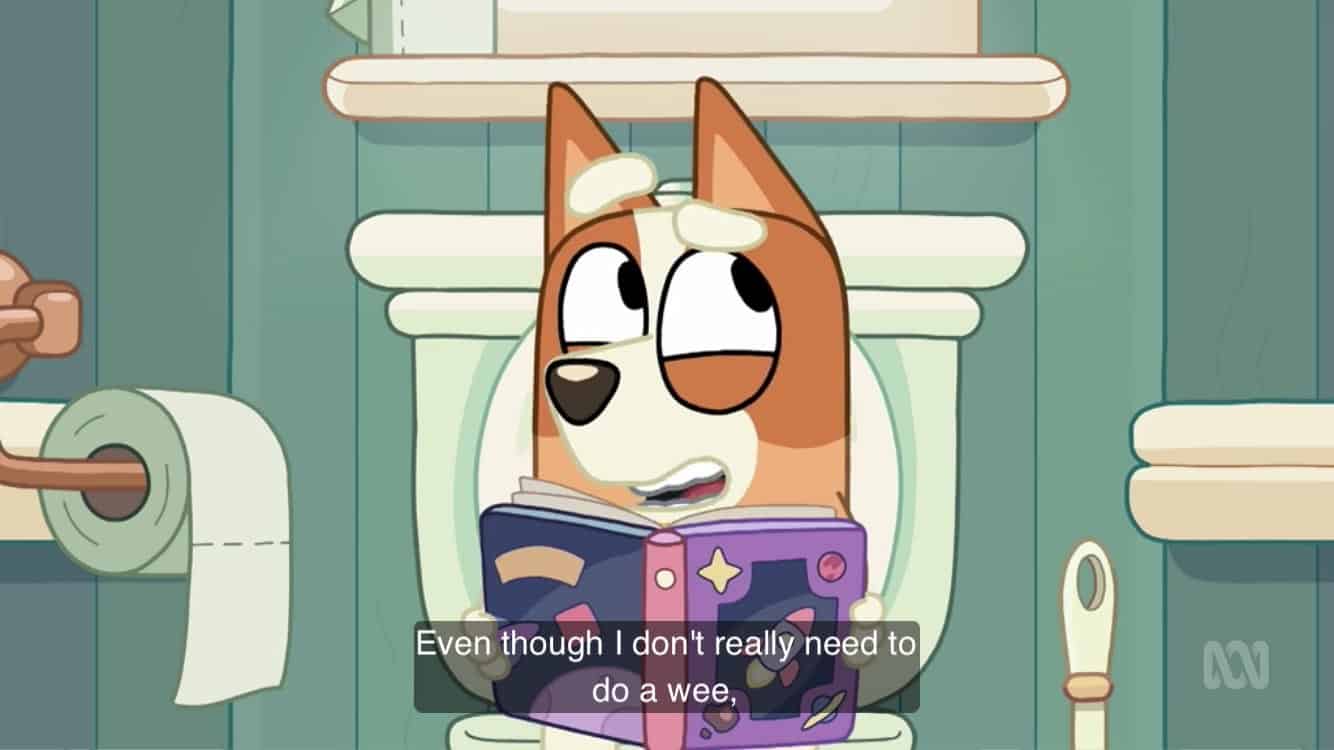
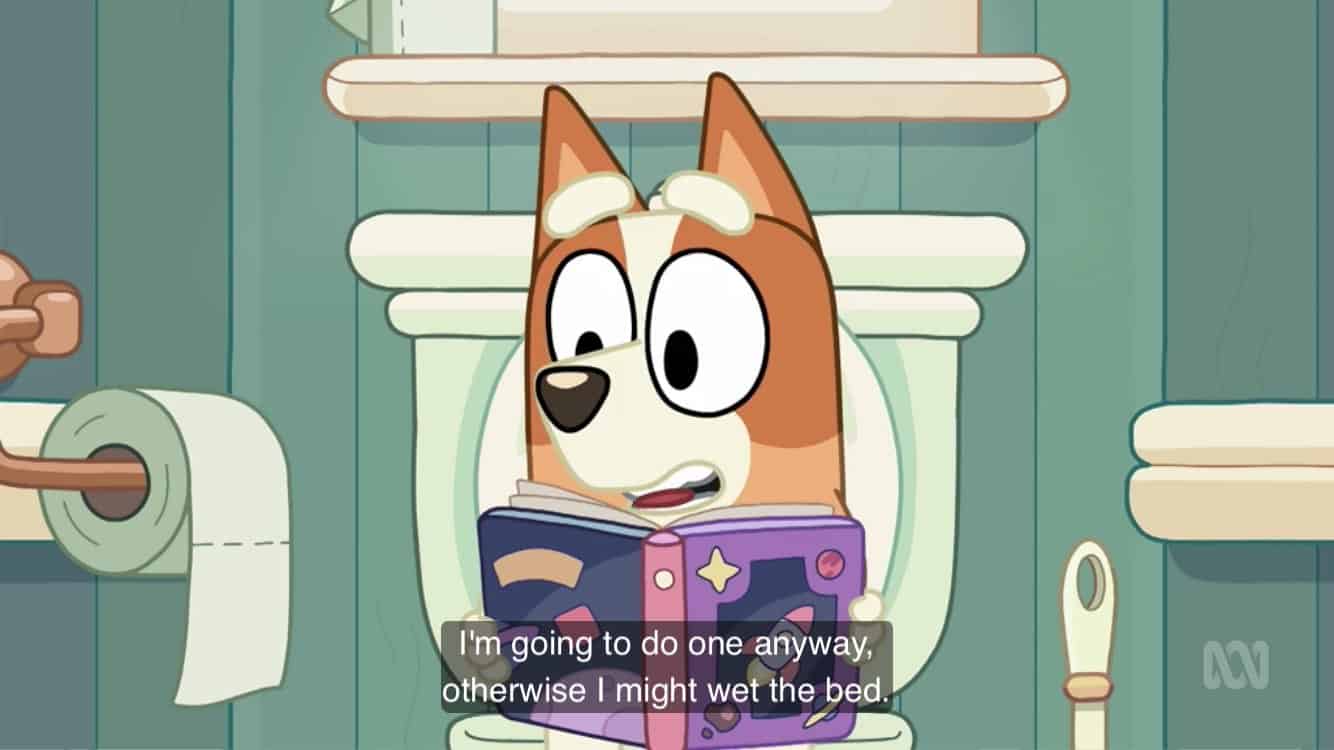

IRONY
In “Copycat”, Bluey’s father observes she has finally stopped copying everything he says. Ironically, Bluey has learned how to deal with grief over a dead budgie and has been channelling him exactly in her make-believe game in which her younger sister refuses to die like the budgie did.
PHYSICAL COMEDY
This medium lets creators play with an unlimited amount of cartoon violence but Bluey is restrained in that regard. Instead we enjoy physical comedy such as slipping on a can of beans or watching grandparents attempt the flossing dance move, and failing.
In episode one, the father has been twisting his daughter in rope swings, about to release her. When she asks him how babies get into their mothers’ bellies, he releases her for the spin to avoid answering the question.
If you like Bluey…
… and you are an adult viewer, check out We Bare Bears. This show is more squarely for an older audience, though I’m sure younger kids would be intrigued by it. The pace of talking will be too face for the 4-6 age group.
FURTHER READING
Everyone loves Bandit from Bluey – but is he a lovable larrikin, or just a bad dad? by David Burton and Kate Cantrell. (Since watching season one of this show, with only very minor reactions to some of the ickier features, the show has unfortunately only gone in the wrong direction.)
This is ungenerous given how much genuine joy the show brings me, but the martial nationalism of Bluey shits me. I think the heat has gone out of it somewhat in Aus since the old War on Terror / Centenary of Anzac years, but this uncritical shitfuckery still pops up everywhere
@NicholasBromfi1

